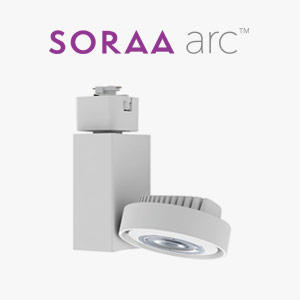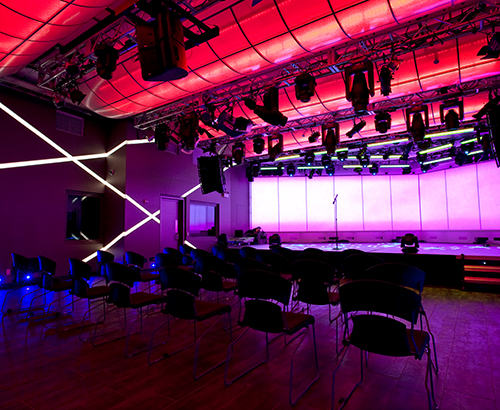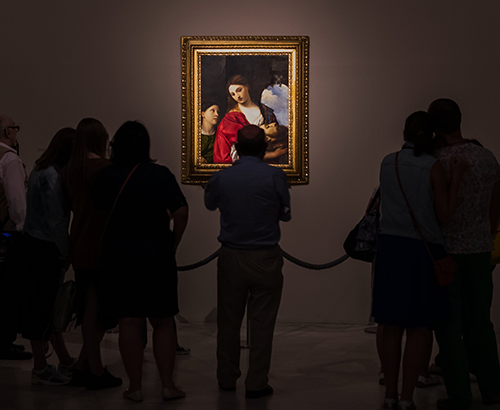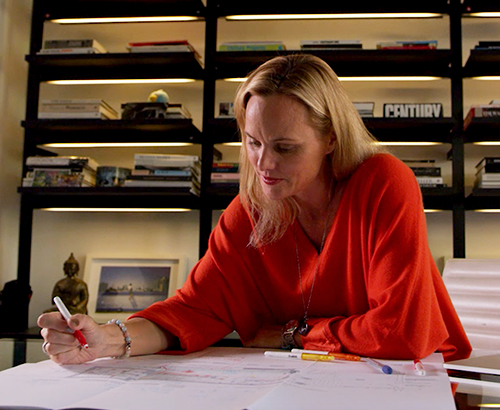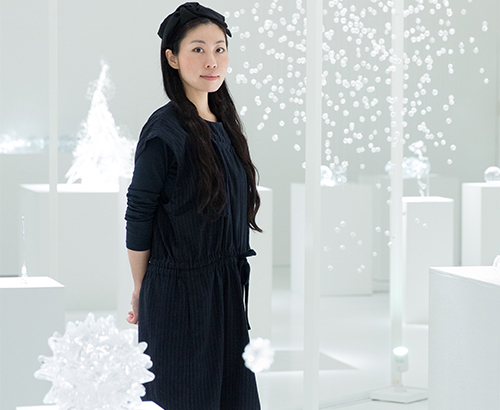I like this
When was the last time a piece of art made you feel one with the world around you? With every installation she creates, interactive artist Jen Lewin redefines the notions of art and community.
Her curious and fascinating large scale installations breathe new life into public spaces. Take "Sidewalk Harp" in Minneapolis, Minnesota, for instance. The permanent, 40-foot long outdoor sculpture doubles as an interactive instrument featuring 36 sensors capped with colorful LEDs. Passersby “pluck” these sensors, or “strings,” to make music of their own in the most unexpected of locales.

Jen Lewin
From Shanghai, China, to Chattanooga, Tennessee, Lewin’s masterpieces transcend traditional conceptions of art and public spaces. Designing installations encouraging togetherness redefines more than art alone—her innovative perspective also transforms what it means to be human in the 21st century.
We were honored to speak with Lewin and hear her extraordinary story about becoming one of the world’s preeminent new media and interactive sculptors. Throughout the interview, Lewin discussed light’s influence on her work, along with light’s ability to bring people together regardless of their ages and cultures.
Can you walk us through your career as an artist?
I was always in the arts, even as a child, and performed on stage as a dancer. I lived in a very beautiful place in Maui, Hawaii, and I have so many vivid memories there. As a child, I vividly remember looking at lighting and lighting conditions, including natural lighting; the way the sun came through the clouds, the way the sun came through a window. I also spent time on the stage, and on stage, of course, everything is about lighting. You look at the process of performing, lighting the stage and creating this theatrical experience.
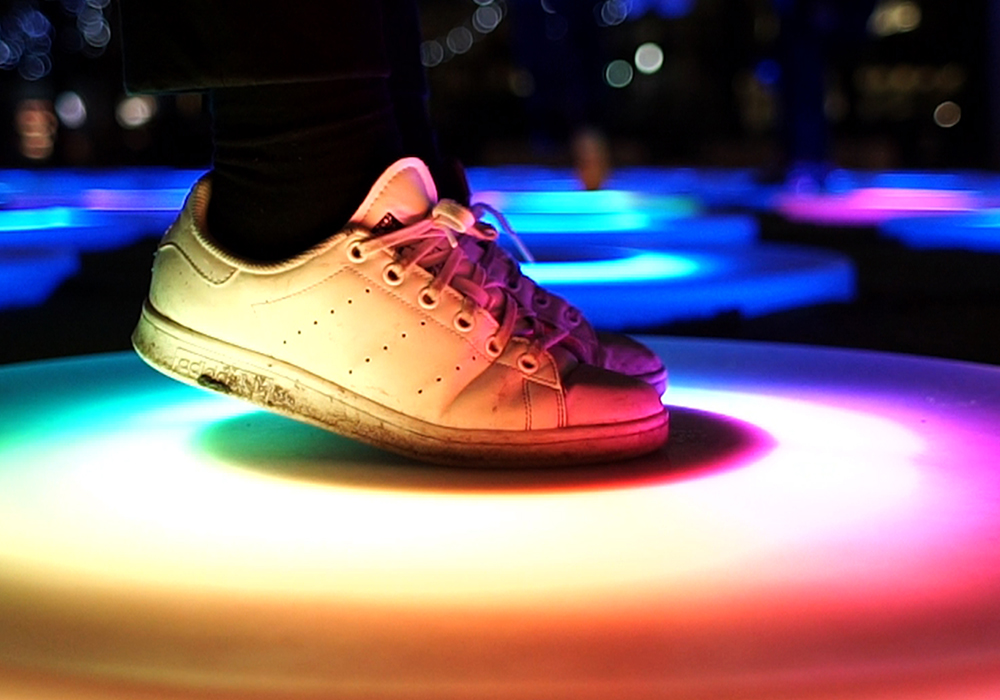
Jen Lewin
In my early ages, I was very, very good at science and technology, but I was also very good at art. At that time, when I was a kid, you had to pick a path in either art or engineering—they were never mixed. When I went to school, I ended up studying architecture; not because I wanted to be an architect in any capacity, but because I wanted to merge art and engineering. That was really the only course of study at the time.
In my study of architecture, I started pulling in a lot of things I loved as a kid, such as theater, dance and lighting. I then started making things, like a harp, and then I started making robotic buildings that moved based on lighting.
That infatuation grew and grew until I was making laser harps about 23 years ago, where you could pass your hand through laser lights and make music. Often, I would imagine something and then I would try to make it. I would figure out the engineering and invent a lot of the technology behind it.
The work grew and evolved, and one of the things that I discovered in the work is that it had this component of interactivity in play that allowed people to really participate and be part of the sculpture. I started to pick and use materials that I found humans were attracted to when it came to engaging them in an interactive way. Sound is a big piece that you can use, and lighting is one of the fundamental ones. You can use light to bring people in and you can create these dynamic interactive experiences.
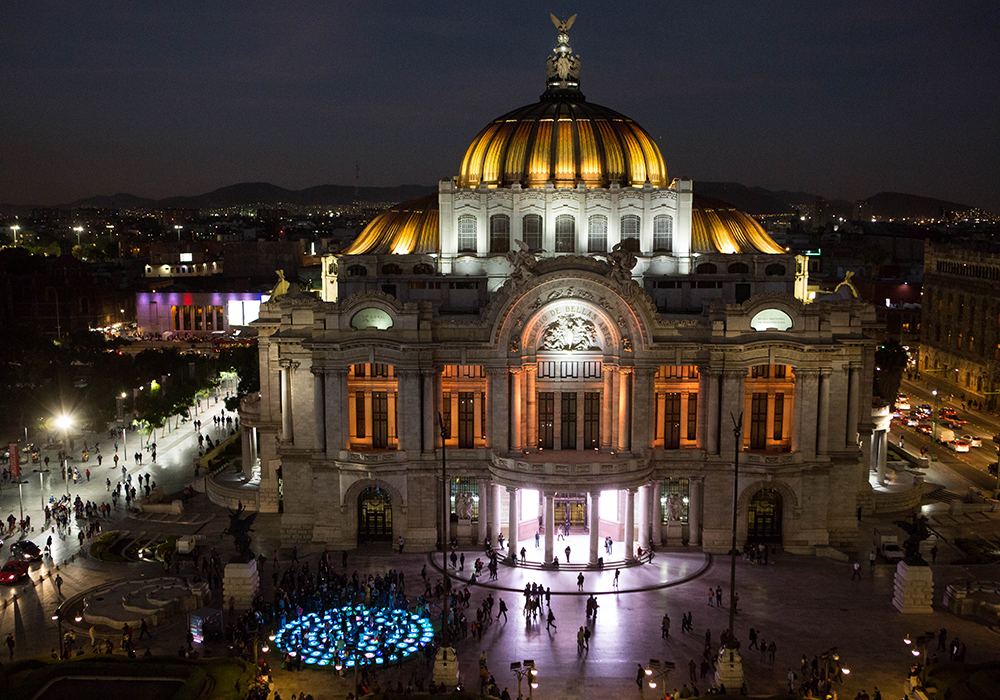
Jen Lewin
Now, I have a full production team and we build public sculptures. The sculptures, half of which are permanent works in public spaces, were commissioned by cities. Others are temporary works that travel around, but they are quite large temporary installations.
At their core, all of the works are interactive. I use technology to make them interactive. All of the technology is built in-house. The technology often drives lighting as a method to create an interactive experience that can engage a large group.
One of my big pieces I did two years ago was a piece called “Aqueous,” which is my largest piece and a traveling piece. It is 10,000 square feet big. Thousands and thousands of interactive components and people jump and play on it. I conceived that piece seven years ago, and it took that long for me to figure out how to make it. My early work envisioned LED components that did not exist yet. I either had to design, develop and invent them, or I to wait for the market to change. There was definitely a balance back and forth to make that happen and to get to a place where I could make the pieces possible.
How would you describe your artistic style?
Almost all of my work has both organic and mathematical qualities to them. I love math. So, there are repeated mathematical forms. Many of the pieces have geometric patterns to them out of necessity because of the constraints of the medium I am in and the scale of the pieces I am doing. There is always a modularity component.
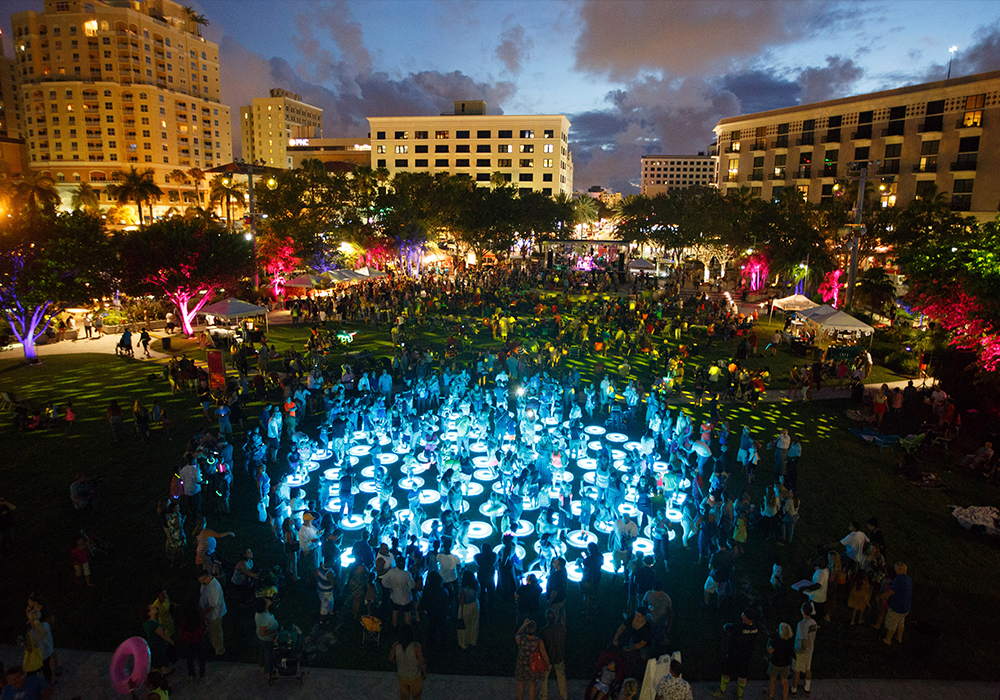
Jen Lewin
I think the aesthetic for all of my work is this playful, joyful engagement. When you stumble upon a piece, there is this moment where you ask yourself, “Wow, what is this?” Then you smile. I watch people run around and play as if they are kids again. I have seen this happen with hundreds of thousands of people around the world.
One of our pieces, “The Pool,” has traveled for 10 years in more than 50 major exhibitions. I have watched people play with it in very different places, such as Abu Dhabi, Singapore, Bahrain and Chattanooga. There is this raw human aspect to all the work where even in these really different places, everyone is the same. I think that is an abstract way to define an artistic style. Behind all the pieces is this joyful human quality that we are all in the same paradigm. We all find attraction to certain things and certain sounds. We all respond positively to certain lights and colors regardless of our culture, age or socioeconomic status, and we capture this human experience within the work.
Do you remember the moment you felt a spark and decided to pursue art?
I remember being 15 and playing with a laser pointer and looking at the way the laser light hit my finger and thinking, “I want to make a laser harp.” It had nothing to do with making a living or even doing it for anything practical except that I became obsessed with the idea of building a laser harp.
“The Pool” is probably my most prolific work. I was 18 and camping in Western Australia, standing in a place where there were all of these tidal pools, and the moon came out. Suddenly, I was surrounded by pools of light. I sketched this phenomenon in my book and though, "I am going to build something like this."
It was completely crazy to build that piece, to be honest. It was expensive and risky. The piece broke many times. There was nothing about that process that was pragmatic from a financial and business perspective. But, that is why I said I feel like I am blessed in a sense that I have become infatuated and obsessed with making these pieces.
Who and what inspire your work?
No particular artist inspires my work directly, though there are artists I really love. Richard Serra is one of them. I love his large, elegant swooping and completely non-electronic forms; they are really beautiful.
I was always inspired by Jim Henson for creating the Muppets, because I saw his work as so unique, different and inventive. He forged a path and created something no one really understood. As a kid, I was impressed with the sense of stubbornness I found interesting.
I look at light artists for inspiration as well. For me, however, there is a missing piece of interactivity in a lot of the work. I did get a chance to work directly with Claes Oldenburg, who is a very prolific public artist. What I found inspiring was that he was an amazing person. He was very kind and smart. It was inspiring to see someone who had become a prolific artist but still seem to be humble, kind and wonderful to work with.
What do you hope people learn and feel when they view your work?
I would like there to be a subtle feeling of great possibility in our public spaces. All the pieces I make are interactive. What is really important about the pieces is that people do not have to line up to trigger a button to enjoy them. The natural interaction allows for a hundred people to interact together all at once. In that scenario, you have this paradigm where people have this moment where they can control the sculpture and play with it. That is all lovely and wonderful and great. But the real magic is when they look up and see what other people are doing and then connect with those people.
In a way, there is this moment of creating community through art and a connected community experience in public spaces through art. I think there is amazing potential for public art to do that and to engage, inspire and transform communities. Perhaps someone looking at a public space sees potential for gathering with people or finding more pride in their environment. Being inspired by a large technology piece may inspire them to become a scientist.
There is also something wonderful about remembering to play in our busy moments. My Minneapolis piece, for example, inspires busy people walking on the sidewalks to jump over, play a harp for a few minutes and then laugh. There is that interjection in the day reminding us that we can be joyful and playful while working hard and being serious.
Do you have memories of people interacting with your pieces in unique ways? How have these memories impacted you?
We have had several exhibitions in Chattanooga, Tennessee, that were moved around by local schools. The sense of pride felt by people who could not imagine a piece of art like this in their park was amazing. They were flabbergasted, and seeing how surprised and excited they were felt great.
Another key memory my team and I often talk about involved an elderly woman in Lisbon, Portugal. We had an exhibition in a public mall that was free for everyone to experience. The exhibition featured a sculpture accentuated by classical music programming.
The woman came up to my team in tears. Due to transportation limitations, she said that she never got to access to high end art programs. The mall was one of the only places she could walk to, and for her to be able to experience something like this in a place she could easily get to was so touching.

